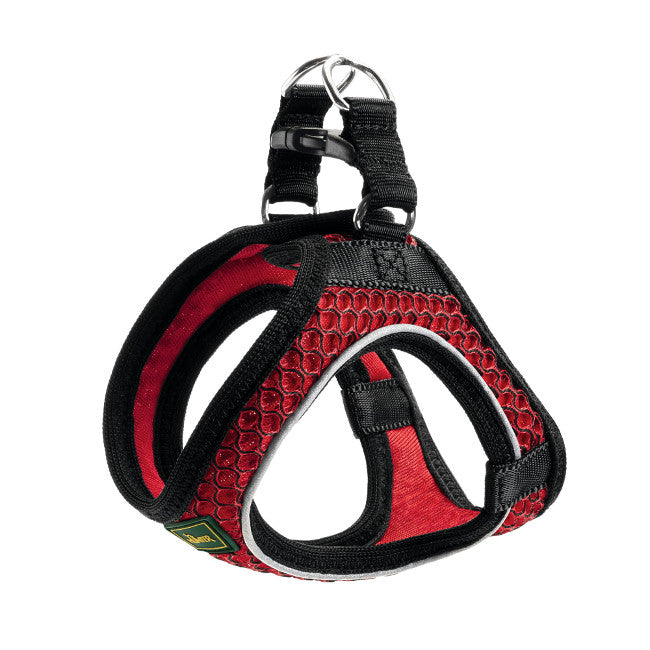6 Myths about dogs you should stop believe in
MYTH 1 - DOGS SEE IN JUST BLACK AND WHITE
Dogs definitely see the world differently than humans, but it’s not true that all they can see is just black, white and grim shades of gray.
Most people can see a full spectrum of colors from red to violet. Doggies lack some of the light receptors in their eyes that allow human beings to see certain colors, particularly in the red and green range. But canines can still see yellow and blue, which is amazing.
What you see as red or orange, to a dog may just be another shade of tan (you can compare it in the tab above). It means, a bright orange ball lying in the green grass may look like a tan ball in another shade of tan grass, but a bright blue ball will look similar to you and your dog as well.
Not only can dogs see fewer colors than we do, they probably don’t see as clearly as we do either. Tests show that both the structure and function of the dog eye leads them to see things at a distance as more blurry. In general it means that what a person with normal vision could see from 75 feet away, a dog would need to be just 20 feet away to see as clearly.
There’s likely a lot of difference in visual ability between breeds. Over the years, breeders have selected sight-hunting dogs like greyhounds to have better vision than dogs like bulldogs.

MYTH 2 - YOU CAN’T TEACH AN OLD DOG NEW TRICKS
With this myth you are definitely barking up the wrong tree. Even though it looks a bit difficult, with the right motivation and praise, patience and love for your senior dog, you can do anything you wish for. You should also keep in mind that an older dog does not have so much energy, he may have reduced ability to see and difficulty to move, therefore we cannot expect any wild performance from him during our training sessions. Enjoy your time together!

MYTH 3 - A DRY NOSE IS A SIGN OF ILLNESS
While waking up with your dog's cold and wet nose on your face is usually how you start the day, we can ask ourselves - why are dog noses typically wet?
The primary benefit to a wet nose is that scent particles stick really well to a moist surface, allowing your dog to pick up lots of smells. When your dog licks his nose, he is both cleaning it and adding moisture. Your dog's moist nose also helps to keep him cool via evaporation, just like how we humans sweat.
At the same time it is a common myth that a dog with a dry nose is sick. Thankfully, this is not true. The vast majority of the time when your dog has a dry nose, it is completely normal and harmless and you do not need to worry.
Your dog's nose being dry to the touch simply means that there is less moisture than usual. His nose may also feel warmer than usual when it is dry. When your dog's nose is dry, you are feeling something closer to his normal body temperature. You can apply a balm on it to make it smoother too.

MYTH 4 - ONE YEAR OF A DOG'S LIFE IS EQUAL TO SEVEN YEARS OF A HUMAN
It’s common knowledge that one year of a dog’s life is equal to seven human years…or is it? If this is the way you’ve been calculating your dog’s age, don’t worry – you’re not alone. However, the truth is that this method isn’t entirely accurate.
Historically, it’s very likely that the “one dog year equals seven human years” method was created to simply show that dogs age faster than humans. Today, scientists and researchers have developed a more precise method of calculating a dog’s age to human years:
- The first year of a dog’s life is equal to 15 human years.
- The second year of a dog’s life is equal to about nine human years.
- Each additional year is equal to about four or five human years.
This takes into account that not all dogs breeds age the same way. In general, smaller dogs live longer than larger dogs, so while a seven-year-old Great Dane might be considered a “senior” dog, the same isn’t necessarily true for a seven-year-old Chihuahua. Therefore, it’s helpful to break down a dog age chart in terms of size, as you’ll see below:

Generally, you can group dogs into small dogs (under 20 lbs), medium dogs (20 to 50 lbs), large dogs (50-100 lbs), and giant dogs (100+ lbs).

MYTH 5 - FEEDING DOGS WITH RAW MEAT MAKES THEM AGGRESSIVE
BARF - Bone and Raw Food - has become more and more popular recently. There is also another myth associated with that, and that is that dogs fed in this way tend to be aggressive. Calm down, there is no connection between raw meat and aggression. The truth is that some dogs defend their bowl, but it is not associated to raw meat. In the same way they can also defend a bowl of carrots if they like it. However, it is good to eliminate such bowl possessive tendency and from an early age train the dog that there is no reason to fight for it.

MYTH 6 - HUMANS CANNOT GET FLEAS FROM DOGS
Naaaaaah, humans can get fleas from their dogs!
When you think of fleas, you probably associate them with your pet. Fleas generally live on dogs, cats, other warm-blooded animals and birds because their fur and feathers make it easy to hide and reproduce. Fleas are very small, wingless, brown-colored parasites that bite skin and suck blood to survive.
But fleas can also bite YOU. While they won’t live on your body, you can still experience potential side effects. A flea can jump up to 13 inches, so it’s possible a pet or other animal can transfer them to you.
Now you know the truth. Have you actually believed in some of the myths mentioned above before you’ve read the article? Let us know.










Leave a comment